Let me be clear. I’ve always been skeptical about expensive power cables, interconnects, speakers cables… and yes, power conditioners. Sure, I’ll recommend a decent power conditioner to my friends who are building their A/V systems and HiFi rigs, but mostly just to prevent errant voltage spikes from damaging their gear. Just how much can go wrong with an AC power signal that you’d need an expensive device dedicated to cleaning it up?
So when Rune Skov, Global Sales Director from Gryphon Audio Designs, told us at a recent demo event for their new Diablo 333 Integrated Amplifier ($25,000) that they were also going to be demonstrating their new PowerZone 3.10 by Gryphon power optimizer ($14,000), my eyebrows were raised. And not in the fun “this could be interesting” way but in the “OK, here comes some bullshit” way.
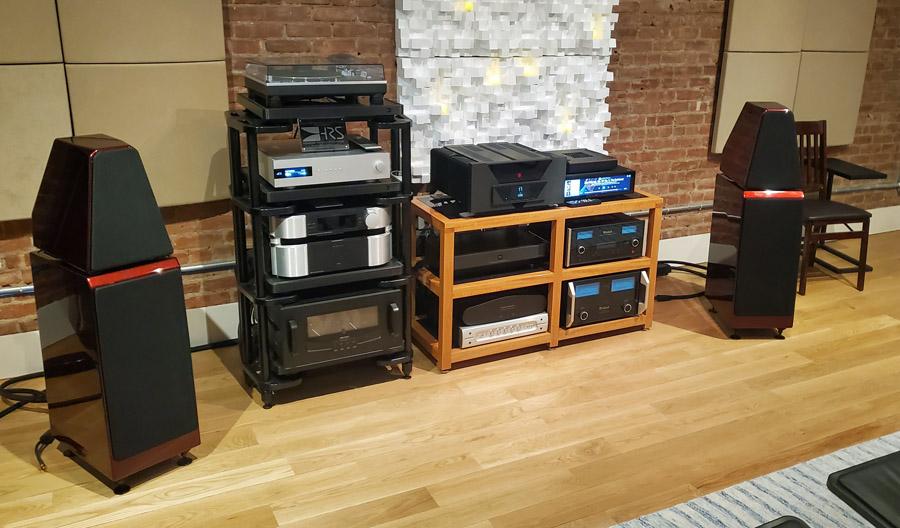
The demo system in the listening room at high-end audio dealer Stereo Exchange in Manhattan was comprised of a Roon Nucleus Titan server ($3,999) providing digital music files to a HiFi Rose RS520 streamer ($3,999) with its gorgeous full width color screen displaying album art, artist, album and song details and more. The streamer fed directly into Gryphon’s Diablo integrated amplifier ($25,000). The amplifier, in turn, was driving a pair of the new Wilson Audio Watts/Puppy 50th Anniversary Edition ($40,000/pair). Cabling was by AudioQuest (pricing undisclosed).
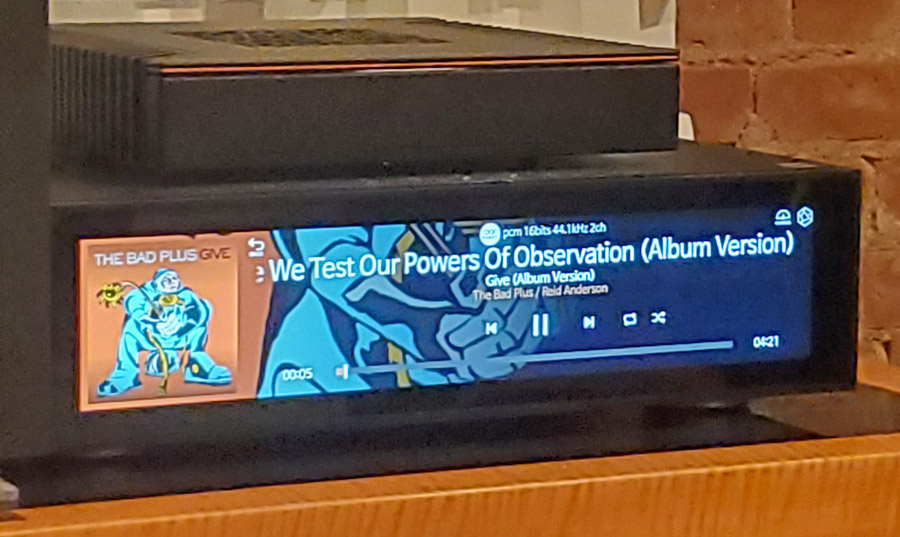
First off, the Gryphon Audio Diablo is one powerful and capable amplifier. With a series of different tracks, the Diablo took control of those Wilson speakers, creating a natural, impactful and musical representation with not a hint of harshness. Rated at 333 Watts/Channel into 8 Ohms or a whopping 666 Watts/Channel into 4 Ohms, the Diablo should be able to drive even the most challenging speaker load. The Wilson Audio speakers are rated at only average sensitivity (89 dB) and have a nominal impedance of 4 ohms, so they clearly benefit from a powerful amplifier, and the Gryphon amplifier appears to be just that.
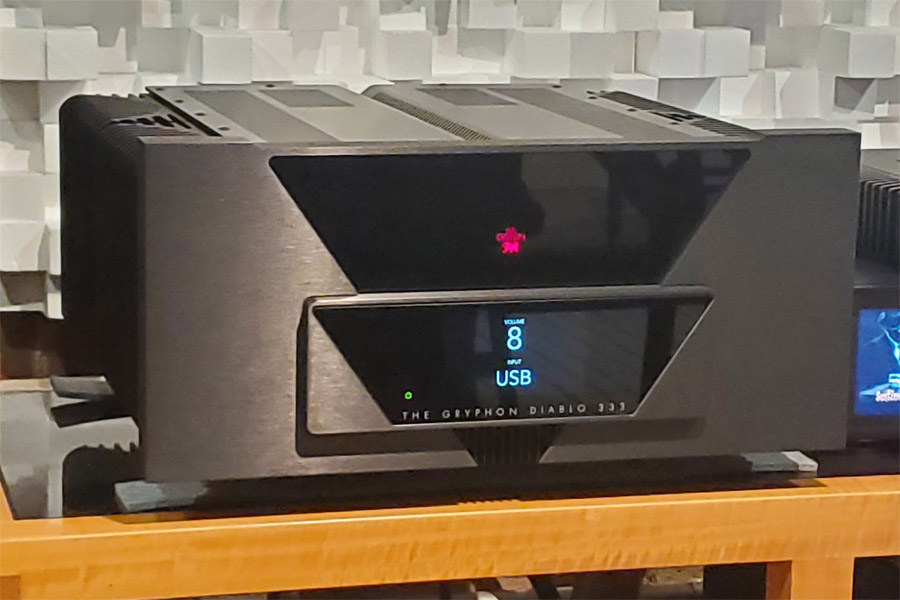
But then came the power conditioner (sorry “power optimizer”) demo. Rune played a track through the system, then unplugged the Gryphon amp from the PowerZone and plugged it directly into the wall. And in my mind while I was trying to figure out synonyms for “snake oil” for my scathing critique, something remarkable happened. I heard a difference.
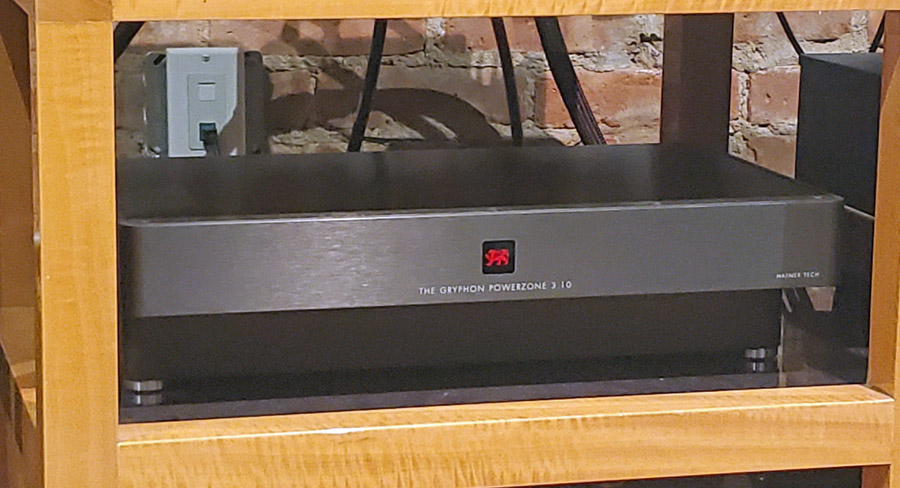
It’s hard to describe exactly what that difference was, but with the PowerZone out of the picture, the background was a little less “black,” the percussion a little less snappy, the voice a little less articulate. The overall reproduction just lacked a certain cohesiveness that it had previously exhibited. Plugging the amp back into the PowerZone, Rune repeated the same track and those details came back into focus. It was sort of like the difference between an excellent recording of music and a live performance of that same music. I’m not saying the PowerZone magically put trumpets, and upright basses and drums and cymbals in the room with us, but it certainly made that suspension of disbelief a simpler affair. Closing my eyes and leaning back, it was a whole lot easier to lose myself in the music when the PowerZone was doing its thing.
I’m not going to even try to get into the theory behind the improvements. There was some discussion about “focused and idealized crystalline conductor structures” resulting in “happy bouncing electrons.” In addition to the patent-pending HafnerTech conductor modules, the PowerZone also employs the SmartStack vibration damping compound in its chassis. This patented compound developed by Denmark’s MENETA Group was first created to control resonance and vibration in the high performance automotive sector. Apparently it also has applications beyond the braking systems of sports cars.
The Bottom Line
The high-end HiFi industry is full of questionable “tweaks” that may or may not be worth the time, the trouble or the expense of pursuing. Do speaker cables need liquid dielectric insulation or raised bridges to elevate them from the floor? Maybe. Maybe not. Probably not. But did the Gryphon PowerZone power optimizer improve the sound of this particular high-end HiFi system? In my admittedly limited experience with it, I’d say, “Yes.” Was the difference I heard worth $14,000? That’s hard for me to say. But for those who are already willing to buy $25,000 amplifiers and $40,000 speakers, what’s another $14K going to hurt?
You can read more about Gryphon’s new products on their web site:
Got your own opinions about power conditioning or “power optimization” or any other tweaks for audio and video systems? As always, let us know in the comments.
Related Reading:
- Goer Dynamics Acquires Minority Stake in Gryphon Audio Design
- Gryphon Audio’s PowerZone 3 Power Conditioners Are Designed for Ultra High-End Audio Systems
- PODCAST: Gryphon’s Global Sales Director, Rune Skov (2024)

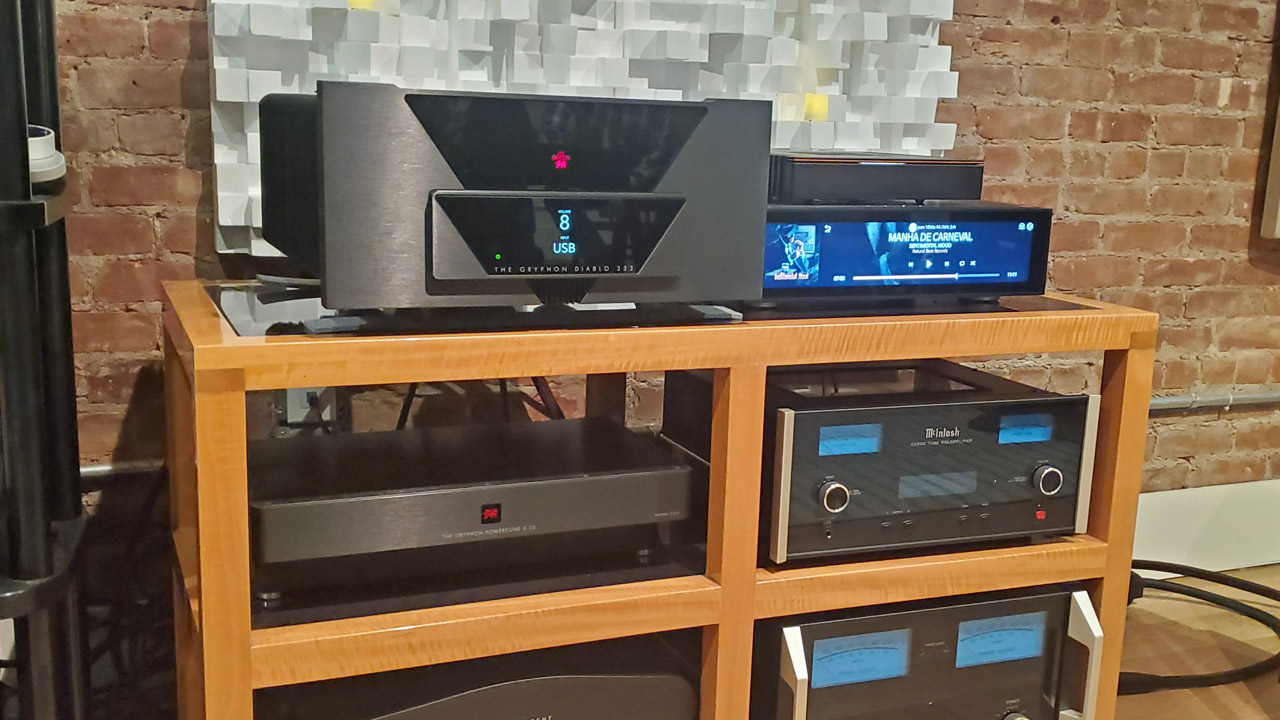





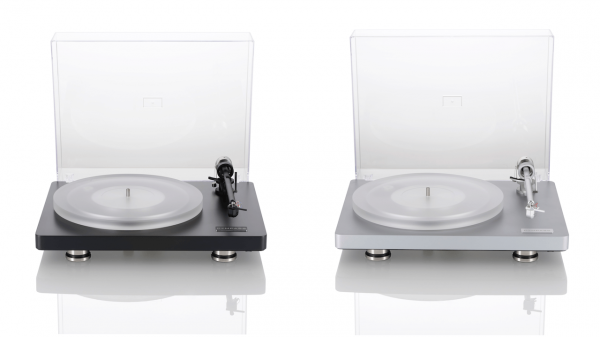
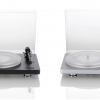


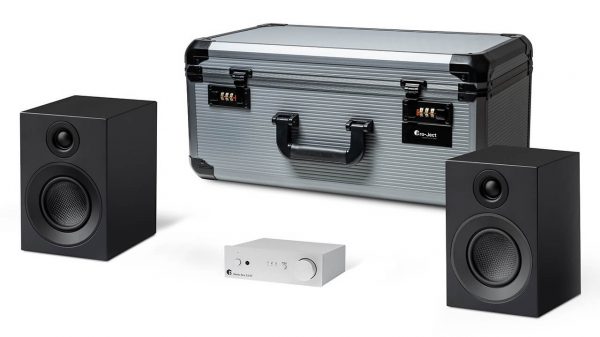
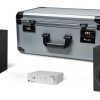







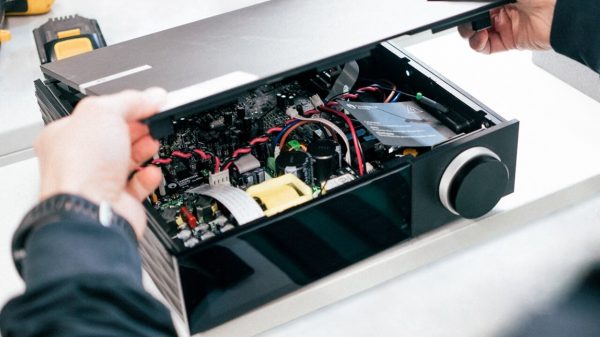

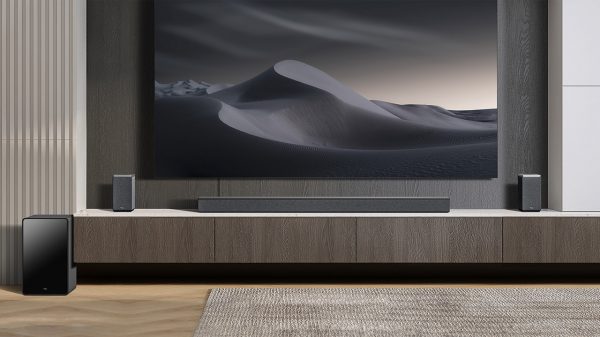

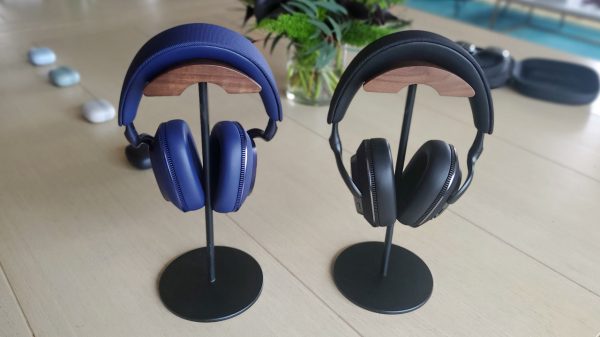
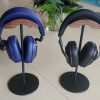











ORT
April 22, 2025 at 1:42 pm
“But beware of the Dork Side. Lust, oppression, OCD; The Dork Side of the Farce are they. Easily they flow, quick to join you in spending. If once you start down the Dork Path, forever will it dominate your density, consume you it will, as it did ORTi-Wan’s apprentice.” – yORTa
“He’s more ATM now than man. Twisted and evil.” – ORT-Wan Spendobi on dORT Vader
“Oooooh…Look! A chicken!” – Me
Lately I tend to take my gimpy self to motorcycle shoppes and mostly stare. Sometimes I sit on a bike. Some things are so cool looking that it hurts more not to look than it does to look in the mirror. You’ll be fine, brother!
ORT
Ian White
April 22, 2025 at 3:00 pm
Ort,
“He’s more ATM now than man. Twisted and evil.” – ORT-Wan Spendobi on dORT Vader — well played.
Andor Season 2 is worth watching. One of the few that are.
Lord Maul
Chris Boylan
April 22, 2025 at 4:50 pm
ORT!
Yes, I know I’ll survive without one. But it made a good headline.
ORT
April 23, 2025 at 3:06 am
That it did, my brother! 🙂 I just could not resist being ortish, if you will.
Let those without wit cast the first bone. 😉
ORT
Ian White
April 23, 2025 at 10:57 am
And thank the maker for that one. We all need a little ORT in our lives these days.
IW
CK
April 22, 2025 at 2:36 pm
“But for those who are already willing to buy $25,000 amplifiers and $40,000 speakers, what’s another $14K going to hurt? ”
I would expect a $25,000 amplifier to be able to handle the minor fluctuations common in home power without impacting its performance in any way whatsoever. The giant transformers and huge capacitors are there to do just that and if they aren’t then it’s a flawed design and not worth its purchase price.
Chris Boylan
April 22, 2025 at 4:50 pm
Solid argument.
Guido Carterra
April 22, 2025 at 11:48 pm
Inane click bait. Nothing more. Shame on you.
Ian White
April 23, 2025 at 12:49 am
Yet you took the time to click and read it. And there’s nothing about it that’s inane. Except the price.
IW
ORT
April 23, 2025 at 3:02 am
Guido…Guido…Guido…Those without a sense of humor are more often than not possessed of a sense of entitlement.
Oh. And I respond because that is obviously not entirely twue of you. Guido: A man, especially an Italian American, regarded as vain, aggressively masculine, and socially unsophisticated.
Perhaps you feign your privilege in a vainwhorious effort to mock those with a sense of humor? I call you out for your being so vainfully broffended. In truth, I don’t give an airborne intercourse.
To paraphrase your flaccid effort at rebuttal – Blame on you.
It’s twue! It’s twue!
aristORTle of Stagira
jeffrey henning
April 23, 2025 at 12:49 pm
Didn’t read anything more than the headline, but it was easy to know that the answer is, “Yes.“
Also, there is one gigantic problem with the headline: it’s hugely incorrect. You can’t listen to a power conditioner unless you’re in a quiet room and you have your ear pressed up against the case or it has a really loud transformer hum.
What can be said is that you listened to a bunch of equipment that was hooked up to the power conditioner and imagined that it sounded better when it sounded exactly the same as before you hooked it up.
There are several reviews of power conditioners on AudioScienceReview.com. They all show that if you measure the equipment hooked up with magic power cables or power conditioners, their performance is exactly the same as when you’ve had them plugged straight into the wall with a non-magical cabling. Running a full suite of tests showed no difference in performance.
None what so ever.
If the performance of your electronics improves due to a power conditioner, that equipment is built with really terrible power supplies.
In one video review at ASR, Amir hooked up a DAC to a laboratory power regenerator that could not only output a perfect, 60Hz sine wave, but also the nastiest, most distorted, noisy electrical power you can imagine.
Using his Audio Precision test equipment, he measured the DAC’s performance under the best & worst conditions possible annd found no audible or measurable change in performance.
Hey, I was disappointed that I’d dropped $750 on a Furman Power unit, but it does offer incredible surge protection.
Bottom line: get really great surge protection and power cables with proper shielding (so they don’t pollute analog cables with power line noise) and you’re good.
Don’t believe in myths or magic.
Ian White
April 23, 2025 at 2:26 pm
Jeffrey,
“If the performance of your electronics improves due to a power conditioner, that equipment is built with really terrible power supplies.” — I agree with that 100%.
I have 3 Chang ISO Lightspeed Power Line Conditioners that I purchased in 1998. Use them for surge protection and nothing more. Still work. My TVs image is slightly less grainy with its power cord plugged into the Chang, but that has more to do with the power in my neighbourhood than anything else. All of the TVs in the my former NJ home exhibited that. My kids even noticed that.
Same people who think $3000 Ethernet cables are magical cures think you need this to make your $10K amp sound like it should. My issue with the ASR crowd is that they have taken the fun out of this. It’s about enjoying music…not being tech nerds.
Good comments.
IW
ORT
April 24, 2025 at 8:01 am
One need only remember this – The Doobie Brothers sang, “Listen To The Music”.
Not “Listen To The Equipment”.
ORT
Ian White
April 24, 2025 at 10:27 am
ORT,
Amen to that. Kinda hate that song. Don’t know why.
IW
Steelhead
April 29, 2025 at 7:43 pm
I was able to purchase a new PS audio powerplant 15 at a significant discount. It was an easy decision as I had I believe 90 days to audition it in my system and if not all that I could return it for a full refund.
I had gremlins and noise and have a plethora of gear hooked in. Stat speakers, tube preamp, tube monoblock amps, reel to reel, cassette deck, sacd/cd player, two turntables, manley skipjack, step transformer for moving coils and could never solve fully the noise issue even with my grounding.
It took five minutes after hooking up the powerplant that I knew it wasn’t going anywhere. One of the best audio purchases I have made and it solved my noise issues long term.
I know Gryphon has a high end reputation (and price – out of my league) but if it is as capable as the ps audio I suspect a lot of happy owners.